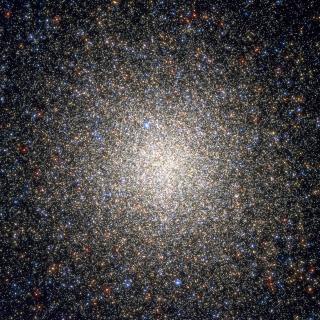Bibcode
Cassisi, S.; Salaris, Maurizio; Pietrinferni, Adriano; Vink, Jorick S.; Monelli, M.
Referencia bibliográfica
Astronomy and Astrophysics, Volume 571, id.A81, 8 pp.
Fecha de publicación:
11
2014
Revista
Número de citas
41
Número de citas referidas
35
Descripción
In recent years the view of Galactic globular clusters as simple stellar
populations has changed dramatically, it is now thought that basically
all globular clusters host multiple stellar populations, each with its
own chemical abundance pattern and colour-magnitude diagram sequence.
Recent spectroscopic observations of asymptotic giant branch stars in
the globular cluster NGC 6752 have disclosed a low [Na/Fe] abundance for
the whole sample, suggesting that they are all first generation stars,
and that all second generation stars fail to reach the AGB in this
cluster. A scenario proposed to explain these observations invokes
strong mass loss in second generation horizontal branch stars - all
located at the hot side of the blue and extended horizontal branch of
this cluster - possibly induced by the metal enhancement associated to
radiative levitation. This enhanced mass loss would prevent second
generation stars from reaching the asymptotic giant branch phase, thus
explaining at the same time the low value of the ratio between
horizontal branch and asymptotic giant branch stars (the R2
parameter) observed in NGC 6752. We have critically discussed this
mass-loss scenario, finding that the required mass-loss rates are of the
order of 10-9 M⊙ yr-1,
significantly higher than current theoretical and empirical constraints.
By making use of synthetic horizontal branch simulations, we demonstrate
that our modelling correctly predicts the R2 parameter for
NGC 6752, without the need to invoke very efficient mass loss during the
core He-burning stage. As a test of our stellar models we show that we
can reproduce the observed value of R2 for both M 3, a
cluster of approximately the same metallicity and with a redder
horizontal branch morphology, and M 13, a cluster with a horizontal
branch very similar to NGC 6752. However, our simulations for the NGC
6752 horizontal branch predict however the presence of a significant
fraction of second generation stars (about 50%) along the cluster
asymptotic giant branch. We conclude that there is no simple explanation
for the lack of second generation stars in the spectroscopically
surveyed sample, although the interplay between mass loss (with low
rates) and radiative levitation may play a role in explaining this
puzzle.
Proyectos relacionados

Vía Láctea y galaxias cercanas
El objetivo general del Proyecto es el estudio de la estructura, historia evolutiva y proceso de formación de galaxias a través de sus poblaciones estelares resueltas, tanto a partir de fotometría como espectroscopia. El proyecto puede dividirse en cuatro líneas principales: I. Historia de formación estelar en el Grupo Local. El objetivo de esta
Martín
López Corredoira